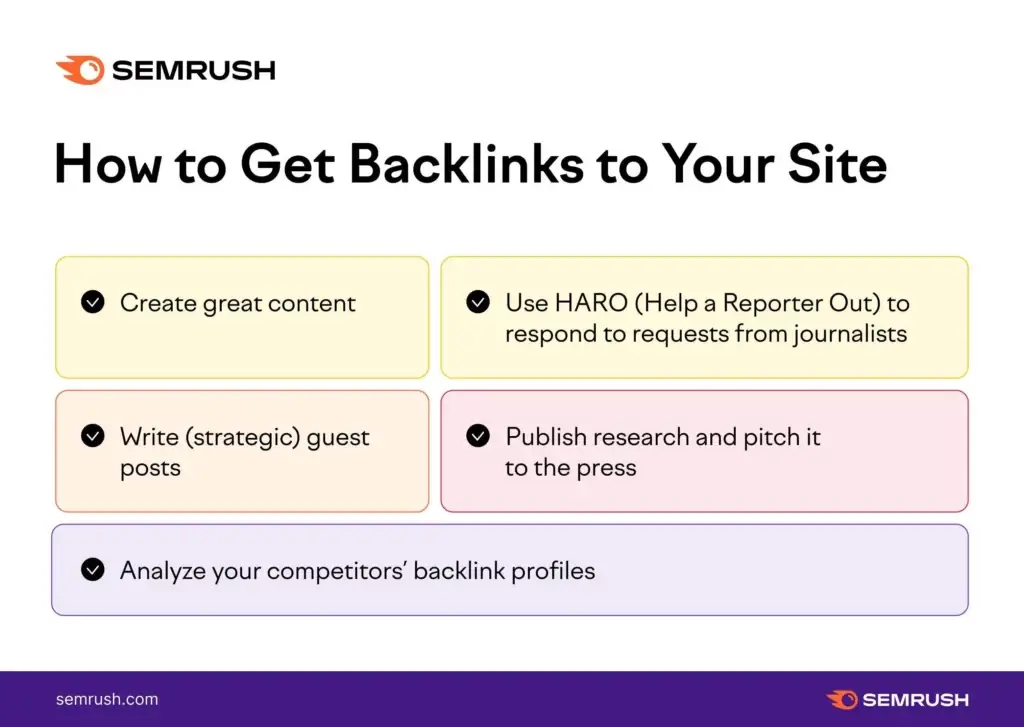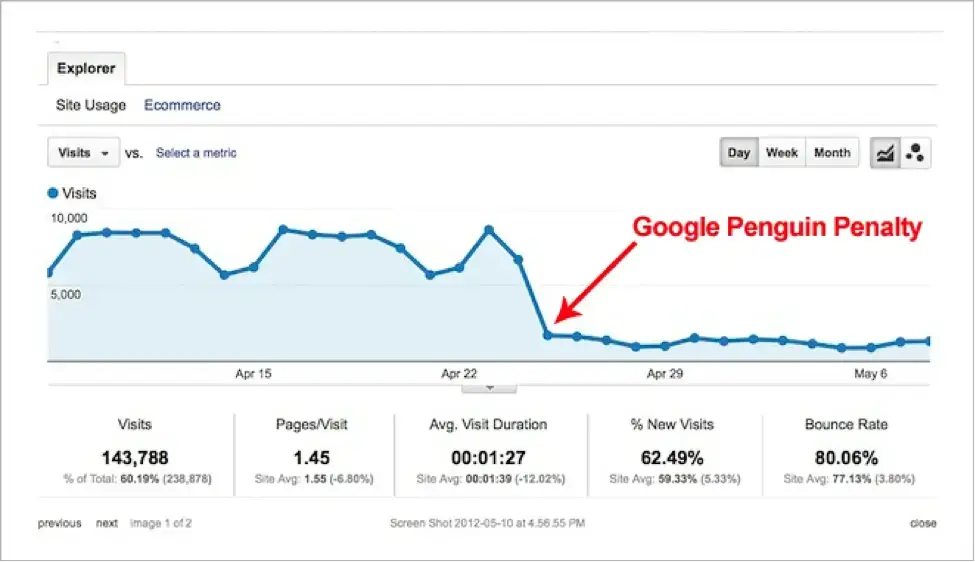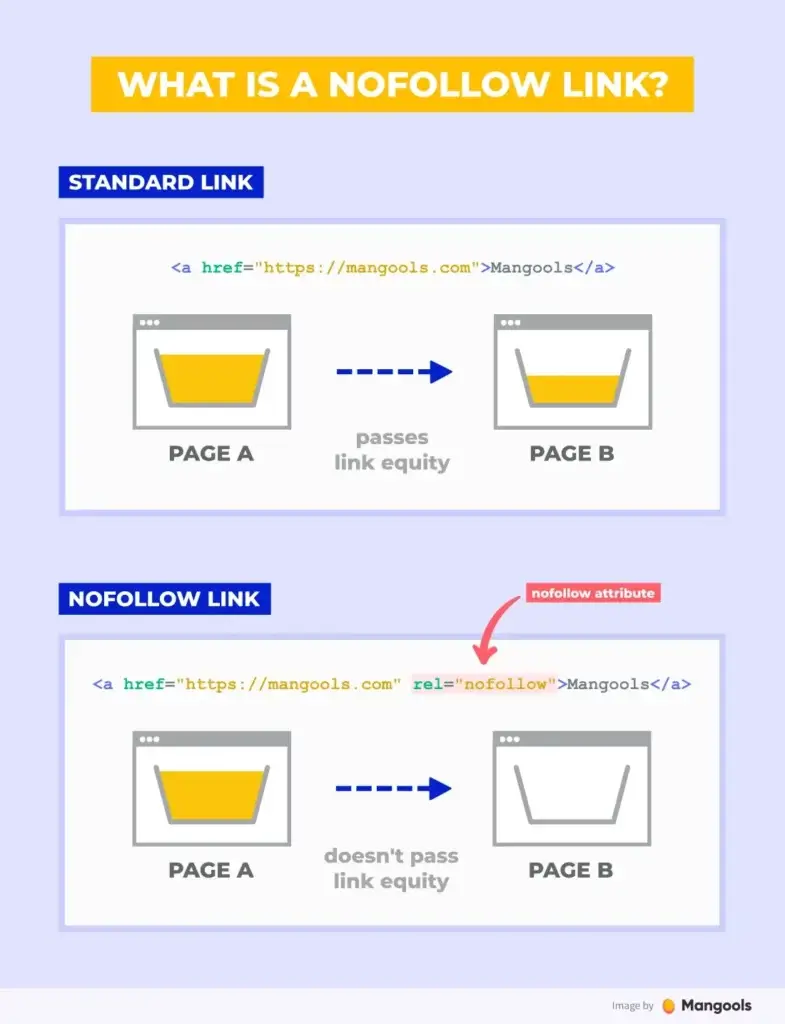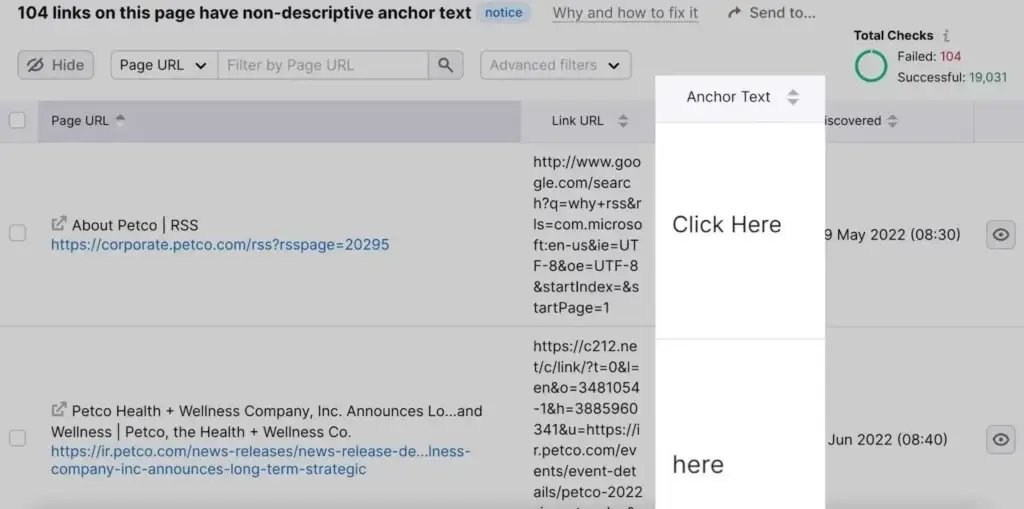Backlinks are the foundation of a good SEO strategy – there’s no denying that. But what exactly is a backlink worth?
Is it simply based on the number of linking domains? The quality of the site linking to you? The Domain Authority or URL rating of the linking page?
All of these factors play a role in determining the value of a backlink, but today we’re going to explore how to determine the value of backlinks.
The importance of backlinks never changes
If there’s one thing that’s certain in the world of SEO, it’s that backlinks are always important. They seem to be the one reliable constant in an ever-evolving process of algorithms, techniques, and strategies.
It’s like a part-time job – no matter how much you learn or how hard you work to stay up to date, SEO is a never-ending cycle of new ways of doing things.
But no matter where you decide to focus your efforts – content creation, keyword research and optimisation, designing a more user-friendly website – be sure not to ignore backlinks.

But how do you determine the value of backlinks?
Determining the value of backlinks is a real head-scratcher for even the savviest online marketer.
It’s the age-old conundrum of determining the value of a backlink continues to challenge modern-day SEOs.
Often it comes down to one person’s opinion versus another, including arguments over the merits and underrated benefits of low-quality links.
Thankfully, several sources offer data and insight into a link’s worth, such as Ahrefs and Semrush; however, it can often be difficult to assess external risk factors that may influence its value.
The best metric for determining the value of a backlink is Domain Authority (DA). DA is a score to measure a website’s overall authoritative backlink profile in the eyes of search engines.
The higher the DA, the more valuable and powerful a link is. A high DA indicates that there are plenty of quality websites linking to it, and making backlinks from such sites can significantly impact your SEO efforts.

So when it comes to quality backlinks, it’s important to pay attention to both the high authority of the site and its relevance.
Next is the anchor text – what kind of words are in your link? Are they relevant words, or completely random strings of characters? The anchor text should be naturally placed within the context of the content around it.
Last but not least, consider the placement and location of your backlinks. Are they embedded in the body of the page, or are they located at the bottom, sidebars and footers?
By paying attention to these key factors, you can determine how valuable a backlink is for your website.
One important question to ask yourself is whether it’s even worth pursuing a link. There’s an opportunity cost to everything, and sometimes it’s better to pass on a link, even if it might be high quality (due to the time and money it’ll take to acquire the link).
That often calls for a deep dive into metrics like click-through rate, organic traffic and bounce rates.
Ultimately, the only person who can answer these questions is you. After all, there’s no one-size-fits-all solution when it comes to backlinks.
Just remember: if a link looks too good to be true – it usually is. So do your homework and always exercise caution before pursuing any link-building opportunities.
The quality of a backlink is more important than the quantity
When it comes to building a successful website, the old saying “quality over quantity” really rings true, especially when it comes to backlinks.
Just like one fine piece of art is always worth more than a dozen copies of a poster, so too should the same mindset be applied when building links.
After all, having ten thousand links from fishy or low-quality websites won’t get you anywhere.

It can be tempting to get as many backlinks as you can to boost your SEO, but it’s also important to remember that quality always trumps quantity.
Having just a few high-quality links from respected sites can do wonders for your website’s credibility.
So if you’re serious about improving your SEO ranking, try to spend more time making sure the links you create are relevant, meaningful and trustworthy.
A do-follow link is worth more than a no-follow link
It’s a bit like passing the baton in a relay race: do-follow links are worth their weight in link juice, because they transfer “the juice” when one website links to another.
While no-follow links can be good for referrals, but don’t actually help you with your search engine rankings at all.

While the thought of chasing after do-follow links may fill you with dread, the benefits they bring your website are unrivalled and make them worth the effort.
It’s good to have a mix of both no-follow and do-follow links, but don’t forget to focus on the quality of your backlinks over quantity.
But it’s important for SEO that those links need to be taken seriously, and anchored text needs to be used responsibly.
Think of it like a road sign – you certainly don’t want someone purposely redirecting drivers on an unexpected detour.
Misleading users in this way can get you into hot water with Google, so make sure you stick to relevant anchored text and leave out any misleading manipulations. Directions don’t lie – after all, you wouldn’t want people getting lost on their journey!
Anchored links are important, but you need to be delicate
Anchored links are a great way to link between two web pages, but they need to be used carefully and with the right discretion.
You don’t want to overload your web pages with too many anchored links, as this can make it difficult for users to make sense of what they’re reading.

A light touch is essential when it comes to utilising them. Too many links will look a bit too “anchor-overloaded”.
It’s also important to be mindful of the way you use keywords. Overdoing this too much in your anchor text can lead to penalties from Google, so moderation is key.
Frequently Asked Questions
How can I see the value of a backlink?
The first thing to do is to use a premium SEO tool. Semrush and Ahrefs both have backlink analysis features that help you see the value of a backlink.
You can either use Semrush’s Domain Overview tool or Ahrefs’ Backlink Tool to help measure the value of a backlink. Semrush will also provide helpful metrics like Domain Rating, Trust Flow, and Citation Flow.
Ahrefs will give you an overall estimated link value for the page or domain you’re looking at. Both tools are great for helping to measure the value of a backlink.
Can backlinks hurt your site?
In short, the answer is no. Backlinks don’t hurt your site anymore. It used to be the case in the past, but Google’s advice since Penguin 4.0 is that you don’t need to disavow spammy links because they’re ignored.
Google’s John Mueller advises that if someone, like a competitor, redirects a spammy penalised site to your website, they’ll ignore it completely.
So there’s no reason to worry about any potential negative effects from backlinks. Just focus on writing great content and building relationships with other websites and influencers who will link to your site naturally.
Why are backlinks important?
Backlinks are very important because search engines view them as a “vote” of trust from one website to another.
For example, if a high-authority domain is linking to your website, search engines will recognise it as an endorsement of the content and view your website as more authoritative than sites without backlinks.
Valuing backlinks is still subjective
The way we determine their value is always changing. Quantity isn’t as important as quality anymore – so make sure you focus on getting links from high-quality sources.
However, the value of a link is still subjective. It all depends on who’s linking to you and why they’re doing it.
Some links can be more valuable than others depending on their relevance and how reputable the source is.
For example, a link from an established website like Forbes or The New York Times is always going to be worth more than a link from an unknown website.
It’s also important to remember that Google takes into account the age of backlinks when determining their value, so it’s not just about getting as many links as possible – it’s about maintaining them too.

